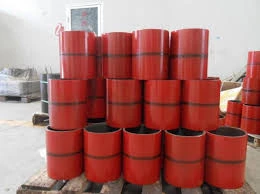- Afrikaans
- Albanian
- Amharic
- Arabic
- Armenian
- Azerbaijani
- Basque
- Belarusian
- Bengali
- Bosnian
- Bulgarian
- Catalan
- Cebuano
- Corsican
- Croatian
- Czech
- Danish
- Dutch
- English
- Esperanto
- Estonian
- Finnish
- French
- Frisian
- Galician
- Georgian
- German
- Greek
- Gujarati
- Haitian Creole
- hausa
- hawaiian
- Hebrew
- Hindi
- Miao
- Hungarian
- Icelandic
- igbo
- Indonesian
- irish
- Italian
- Japanese
- Javanese
- Kannada
- kazakh
- Khmer
- Rwandese
- Korean
- Kurdish
- Kyrgyz
- Lao
- Latin
- Latvian
- Lithuanian
- Luxembourgish
- Macedonian
- Malgashi
- Malay
- Malayalam
- Maltese
- Maori
- Marathi
- Mongolian
- Myanmar
- Nepali
- Norwegian
- Norwegian
- Occitan
- Pashto
- Persian
- Polish
- Portuguese
- Punjabi
- Romanian
- Russian
- Samoan
- Scottish Gaelic
- Serbian
- Sesotho
- Shona
- Sindhi
- Sinhala
- Slovak
- Slovenian
- Somali
- Spanish
- Sundanese
- Swahili
- Swedish
- Tagalog
- Tajik
- Tamil
- Tatar
- Telugu
- Thai
- Turkish
- Turkmen
- Ukrainian
- Urdu
- Uighur
- Uzbek
- Vietnamese
- Welsh
- Bantu
- Yiddish
- Yoruba
- Zulu
casing coupling dimensions
Understanding Casing Coupling Dimensions in Oil and Gas Industry
Casing coupling dimensions play a critical role in the oil and gas industry, particularly in drilling operations. In essence, casings are essential components used to line the borehole, ensuring the structural integrity of the well and preventing the collapse of the surrounding geological formations. The coupling connects two segments of casing, and its dimensions are crucial for maintaining the strength and stability of the entire wellbore.
Importance of Casing Coupling
Couplings serve multiple purposes in the drilling process. They provide a reliable connection between casing pipes, allowing for the easy assembly and disassembly of these pipes as drilling progresses. In addition, couplings must withstand high-pressure environments and resist the corrosive effects of different fluids found in subsurface formations. The dimensions of these couplings—such as external diameter, wall thickness, and thread type—are meticulously specified to ensure that they meet industry standards and can handle the required loads.
Casing Coupling Dimensions
When we talk about casing coupling dimensions, several factors come into play
1. Outer Diameter (OD) The outer diameter of casing is critical as it determines the size of the hole that will be drilled. Common sizes range from 4 to 20 inches, depending on the application and the depth of the well. The OD affects the hydraulic performance of the casing and its ability to withstand external pressures.
2. Wall Thickness The wall thickness of the casing influences both its strength and its weight. Thicker walls can provide greater resistance to external forces but can also be heavier and more difficult to handle. The choice of wall thickness must take into account the expected loads and pressures faced during drilling.
casing coupling dimensions

3. Length Casing sections typically come in standard lengths, which can range from 20 to 50 feet. These lengths can be adjusted based on the specific requirements of the drilling operation.
4. Thread Type The type of threads on the coupling can vary based on the casing standards and the environment in which they are used. Common standards include API (American Petroleum Institute) and premium connections. The threading impacts how effectively the couplings can hold together under pressure and whether they can be easily connected and disconnected.
5. Material Couplings are generally made from steel, but the specific grade and alloy can vary depending on the environmental conditions and the type of fluids involved. Higher grades of steel offer better resistance to corrosion and higher pressures but come at a greater cost.
Industry Standards
The oil and gas industry has established standards for casing coupling dimensions to ensure safety and operational efficiency. The API 5CT specification provides guidelines for the manufacturing and specifications of casing and tubing materials, including the required dimensions for couplings. Compliance with these standards is not optional; it ensures the safety and reliability of drilling operations.
Conclusion
In summary, understanding casing coupling dimensions is vital for professionals in the oil and gas industry. The interplay of outer diameter, wall thickness, length, thread type, and material contributes significantly to the overall performance and safety of drilling operations. As technology continues to advance, the design and manufacturing of casing and couplings will evolve, but the fundamental principles surrounding their dimensions remain crucial for the integrity of wellbore construction. Proper attention to these details not only guarantees operational efficiency but also upholds safety standards in the field.
-
Well Casing Extension Couplings – Applications and InstallationNewsJun.06,2025
-
Types of Crossover Subs in Drilling & CompletionNewsJun.06,2025
-
Key Features of High-Quality Tubing Pup JointsNewsJun.06,2025
-
Installation and Maintenance Tips for Steel Couplings for PipeNewsJun.06,2025
-
How to Select the Right Pup Joint for Oil & Gas OperationsNewsJun.06,2025
-
Applications of Stainless Steel Pipe CouplingsNewsJun.06,2025







